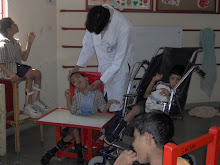When asking a parent of a child with special needs to follow a particular oral hygiene protocol, dentists very often go by regimen that require an extensive effort by the parent. While we claim that this greatly reduces plaque, caries and improves the oral health of the child, it does not answer a simple question one parent asked me, "have you any idea how difficult it is ?" and an even more stunning follow up, "is it really worth it?". For a long time this question has been answered evasively, with most dentists agreeing that effectiveness being a "subjective" aspect was best left to clinical judgement. While I am a staunch supporter of personalized judgement over generalized scales, over the past decades attempts have been made to quantify this essentially qualitative aspect of dental care. The result has been the development of the Oral Health Related Quality of Life (OHRQoL) Scales.
There are five basic instruments in use today, that have been designed to specifically assess quality of life in children. They include the following questionnaires: Child Perception Questionnaire (CPQ 11-14), the Michigan OHRQoL scale, the Child Oral Health Impact Profile (Child-OHIP), the Early Childhood Oral Health Impact Scale (ECOHIS) and the Child Oral Impact on Daily Performance (Child-OIDP).
These scales aim to quantify what has been essentially seen a qualitative sign and have achieved some success in their ability to measure the impact of oral illness on the child's health as well as assessing how it is perceived by the parents and what impact oral disease has on the family. The scales have been translated into several languages and have been shown to retain their validity even after translation.
The development of scales, especially the early childhood scales has an important bearing for special needs dentists. As with very young children, the measurement of quality of life of children with special needs is often difficult. Early childhood scales utilize a combination of family impact and parental perception to offer a probable impact on quality of life. The Early Childhood Oral Health Impact Scale (ECOHIS) in particular has shown good correlation between perceived quality of life and oral disease in children below 5 years of age. Furthermore the scale has been successfully translated into French,Portuguese and Farsi. Ability to assess quality of life measures in such young individuals raises the possibility of a greater accuracy in the estimation of quality of life of children who are unable to express themselves.
Interesting as these scales are, it would be premature to assume that a scale is a substitute for clinical judgement. While scales are essential to compare between populations individual treatment needs and individual treatment plans will still require the knowledge, compassion and chairside manner that are the backbone of special needs dentists around the world. At the same time they would allow the dentist a benchmark on which to base what she/he would consider the normal. While quality of life scales will definitely prove to be a great tool for researchers, only time will tell if they can have an equal impact on clinical practice.






